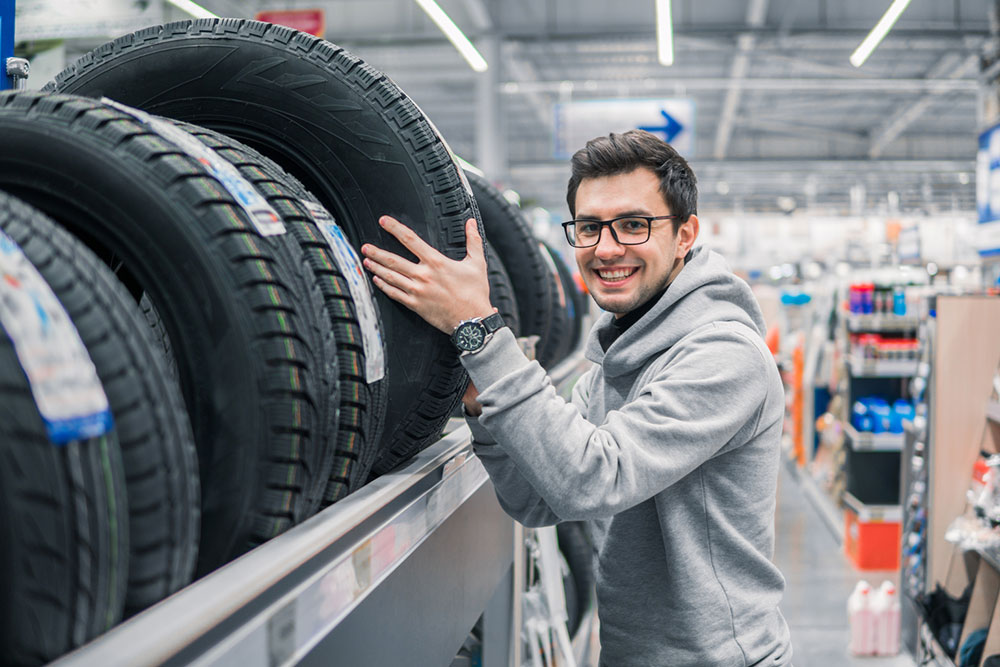8 mistakes to avoid when buying new tires

It is crucial for one to select the right set of tires to ensure the optimal performance of their vehicle as well as their own safety. However, this process is laden with certain potential pitfalls, which may put one at risk and cost heavily financially even after replacing the tires. So, to ensure that one has purchased the perfect set of tires for their vehicle, it is essential for one to avoid these pivotal mistakes.
Not considering the regional conditions
One of the top mistakes to avoid when buying new tires is neglecting the regional and weather conditions where the vehicle is commonly used. This is because the quality of roads, terrain, and weather conditions have a significant influence on the performance of the tires. For instance, if one resides in a snowy region, one must choose tires that are tailored for snowy roads and offer enhanced traction. Similarly, those who live in regions prone to rain must opt for tires with superior wet traction. Besides, if one often uses their vehicles for off-roading, they must take that into consideration when choosing new tires. By considering these factors, drivers can ensure enhanced safety, easy maneuverability, and an overall seamless driving experience since their tires would be well-suited to the specific conditions they encounter.
Buying the wrong size tire
Selecting the correct tire size is also crucial, as it directly impacts the vehicle’s performance, safety, and overall driving experience. To choose the perfect size of tires, one can refer to the string of numbers and alphabets that are written on tires. For example, it might look something like – 215/60R16. Here, the initial number, “215,” indicates the width of the tire in millimeters. The second number, “60,” refers to the ratio of the height of the tire to its width. When purchasing new tires, it is important to ensure that this code matches with the vehicle’s existing tires. Choosing tires with incorrect sizes may compromise the vehicle’s handling, fuel efficiency, and safety.
Not considering the speed ratings
One must also consider the usual speed they drive at and purchase the tire with a matching speed rating. One can check the speed rating from the same string of numbers and letters. For instance, if the string says “225/55R17 94H,” the “H” denotes the speed rating. Usually, “H” means that the tire can handle speeds of up to 130 miles per hour. One can check the speed rating of tires with the alphabets mentioned on them via Speed Rating Charts online. Neglecting to consider this rating can have major repercussions on both safety and performance. For example, using a tire with a speed rating lower than the manufacturer’s recommendation poses a significant risk, particularly on highways or where one may have a higher speed limit.
Not considering the load ratings
Similarly, one must also check the load rating of the tire before purchasing. The load rating of the tire can also be checked from the same code. Again, consider the example of the string – 225/55R17 94V. Here, the number “94” represents the load index of the tire, indicating its weight-carrying capacity. If one overlooks this number when picking tires, it could lead to problems. For instance, if one’s car initially had tires with a load index of “94,” but one chooses tires with a lower load index, like “89,” those tires might struggle to carry the weight of the vehicle.
Choosing price over quality
Choosing inexpensive tires over good quality tires can end up costing one more in the long run. Firstly, they might not last long and may require a change sooner. This way, one would eventually have to spend more by getting a tire change in a short period. Secondly, the tires might not provide a good grip, which could be extremely unsafe. So, it is crucial for one to find a balance between a fair price and good quality tires. This will not only keep one safe on the road but also ensure the tires last longer, saving one from unexpected expenses down the line.
Not reading reviews
Like any other commodity, before purchasing tires, one must read their online reviews to get an idea of which tires to purchase. With reviews, one can also get details of how the tires really perform on the road and can make an informed decision. Taking a moment to read reviews also helps one decide which tires match their requirements and accordingly shortlist a few products based on it.
Not inspecting new tires after installation
Inspecting the newly installed tires is a step often overlooked but critical for optimal performance and longevity. One must ensure that the installation process adheres to the standards, leaving no room for visible defects. Along with that, one must also check if everything is in order and take a test drive to confirm that the tires have been installed properly. If one notices anything is amiss, they must inform the shop where the purchase was made right away to avoid any future problems.
Neglecting the warranty
One must also not neglect the warranty when it comes to purchasing new tires since it offers protection against unexpected problems. For instance, if a tire unexpectedly wears out too soon or has a defect, a comprehensive warranty can save one from unexpected expenses.